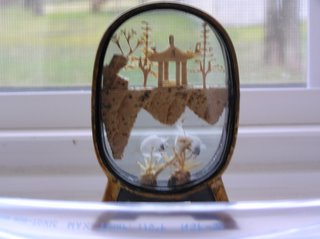 Need-to-know anatomy. Overview.
Need-to-know anatomy. Overview.The human brain is made up of billions of neurons, or nerve cells. Each one connects to thousands of other nerve cells, all of which communicate via chemical messengers. At any one moment, millions of these signals are speeding through pathways in the brain, allowing it to process and analyze information and send out instructions to various parts of the body.
Deep inside one portion of the brain, known as the temporal lobe, is a structure called the hippocampus, which is thought to be where short-term memories are converted into long-term memories. The hippocampus often is atrophied in the brains of Alzheimer's patients. Moreover, in these individuals, the hippocampus and other areas of the brain involved in thinking and decision making are filled with two types of abnormalities--beta-amyloid plaques and neurofibrillary tangles. Plaques are deposits outside and around the neurons, made up of dense globs of a protein called beta-amyloid, mixed with other cellular material. Tangles are made up of microtubules, part of the transport system inside nerve cells. Scientists are not sure whether these abnormalities cause Alzheimer's, but they are the focus of a lot of research because Alzheimer's patients have many more of them than healthy older people do.
Deep inside one portion of the brain, known as the temporal lobe, is a structure called the hippocampus, which is thought to be where short-term memories are converted into long-term memories. The hippocampus often is atrophied in the brains of Alzheimer's patients. Moreover, in these individuals, the hippocampus and other areas of the brain involved in thinking and decision making are filled with two types of abnormalities--beta-amyloid plaques and neurofibrillary tangles. Plaques are deposits outside and around the neurons, made up of dense globs of a protein called beta-amyloid, mixed with other cellular material. Tangles are made up of microtubules, part of the transport system inside nerve cells. Scientists are not sure whether these abnormalities cause Alzheimer's, but they are the focus of a lot of research because Alzheimer's patients have many more of them than healthy older people do.
Health Tips from Dr. Healy:
Exercise your mind and body to fend of Alzheimer's (Play Video)
Alzheimer's patients still benefit from an early diagnosis
Fit body helps to improve mental function, too


0 Comments:
Post a Comment
Subscribe to Post Comments [Atom]
<< Home